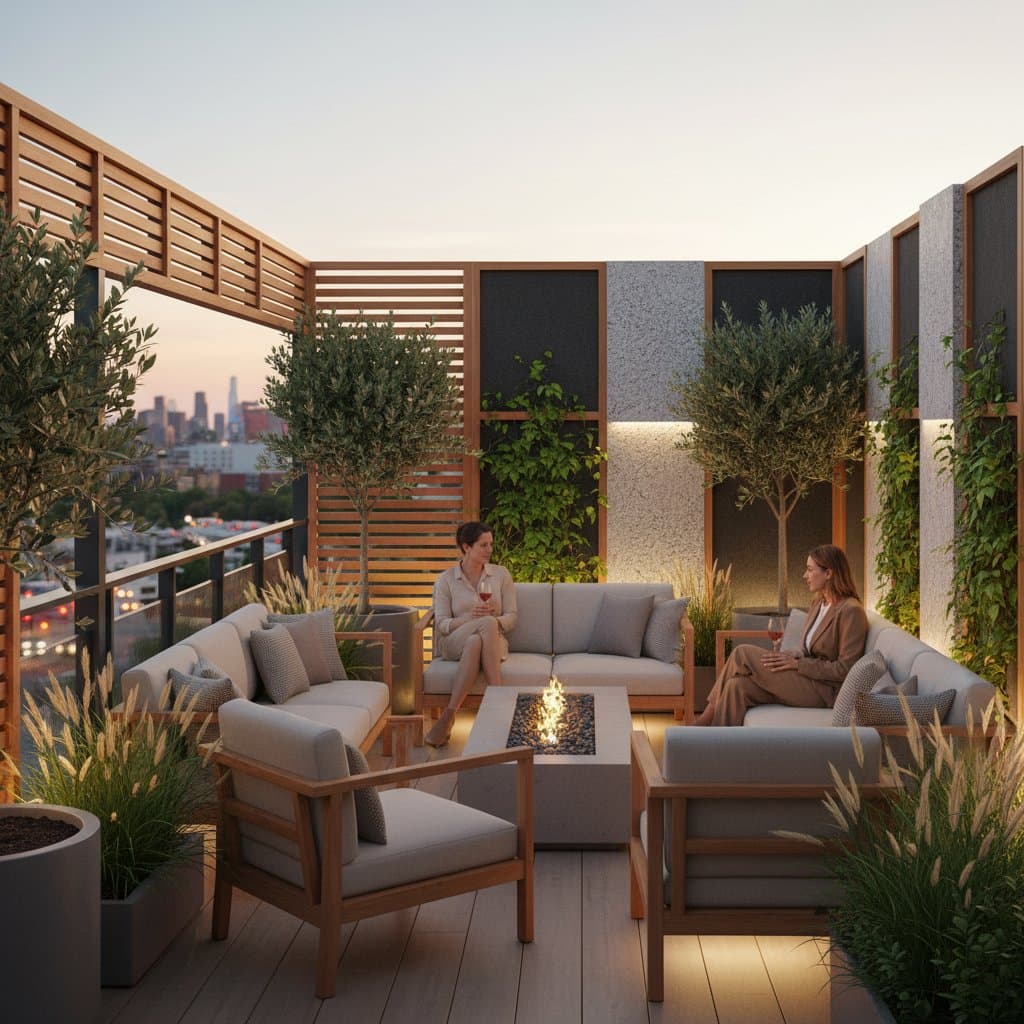Achieve Tranquility on Your Balcony with Acoustic Screens
Urban environments offer vibrancy and accessibility, yet persistent traffic sounds and neighboring conversations often transform balconies into unwelcome extensions of street activity. Acoustic screens provide an effective solution. These barriers absorb unwanted noise and establish personal boundaries, enabling residents to enjoy a secluded outdoor area amid city bustle. Installation requires straightforward tools, careful preparation, and a few hours of effort.
Understanding Acoustic Screens
An acoustic screen functions as a specialized panel or divider engineered to capture sound waves instead of bouncing them back. Positioned along balcony railings, such screens mitigate external disturbances like vehicle horns and pedestrian voices, while also dampening internal reverberations. Privacy benefits arise from obscuring views from adjacent structures. Materials typically include dense foam cores, recycled polyester fibers, or metal sheets with absorptive linings. A well-configured arrangement reduces audible intensity by 10 to 15 decibels, equivalent to retreating one additional story from ground-level commotion.
Essential Tools and Materials
Gather these items before starting:
- Tape measure for precise dimensions
- Drill equipped with a masonry bit for secure attachments
- Level to ensure even alignment
- Mounting brackets or heavy-duty hooks for support
- Weather-resistant screws or wall anchors for durability
- Pre-sized acoustic panels compatible with your railing
- Optional additions: UV-stable outdoor fabric, zip ties for adjustments, or decorative frame edging
Standard panels measure 24 or 36 inches in width, fitting most railings. For tailored options, select marine-grade plywood or PVC as the foundation, layer it with acoustic foam or mineral wool insulation, and cover with breathable exterior fabric to withstand elements.
Installation Process
Follow these steps to set up your screens efficiently.
- Measure the balcony thoroughly. Note the height and length of every railing segment, allowing a minimum 1-inch (2.5 cm) space for bracket clearance.
- Sketch the arrangement. Complete enclosure maximizes noise suppression, though targeting the primary noise source, such as a facing roadway, suits limited funds.
- Indicate mounting locations. Employ the level to draw straight guidelines, as misalignment invites acoustic gaps.
- Secure brackets or hooks. Verify each supports at least 15 pounds (7 kg). Opt for expansion anchors in concrete or masonry surfaces.
- Position the panels. Hoist each unit onto the brackets and fasten firmly, minimizing spaces exceeding half an inch.
- Address seams. Apply strips of outdoor fabric or adhesive weatherstripping to seal minor openings against sound penetration.
- Evaluate performance. Retreat indoors to assess audio changes. Reinforce connections or incorporate extra dense material if echoes or rattles persist.
Key Safety Considerations
Don protective gloves when working with metallic components or fibrous insulation. Employ ear protection during drilling operations. Position panels away from ignition sources like grills or heating units, given the potential flammability of absorptive substances. For shared railings in multi-unit buildings, consult management regarding load capacities prior to installation.
Common Issues and Solutions
If sounds continue to infiltrate, inspect and fill perimeter voids or overlay additional fabric layers. For unstable panels, upgrade to extended screws or robust anchors. To combat condensation, drill modest drainage vents at panel bases. Prevent aesthetic decline by selecting UV-protected coverings or refreshing with a transparent sealant biannually.
Cost Estimates and Timeline
Budget 150 to 300 dollars for a compact balcony setup. Factory-assembled panels command higher rates per square foot compared to homemade versions, yet they streamline the process. Two individuals can complete a simple configuration in three to four hours. Primary expenses involve premium materials and reliable hardware. Steer clear of inexpensive, uncoated foam, which deteriorates rapidly in outdoor conditions.
Ongoing Care Instructions
Clean panels monthly using a moist cloth to remove surface grime. Gently vacuum fabric surfaces to clear dust accumulation that impairs absorption. Inspect attachments biannually for corrosion or slack. Coastal residents should flush panels with freshwater periodically to eliminate salt residue.
Preparing for Seasonal Changes
Prior to winter storms or intense rainfall, examine panels for fractures or fabric droop. Apply silicone caulk along railing junctions to block moisture entry. During spring maintenance, refresh frame coatings to inhibit rust formation.
Efficient Storage Practices
Organize spare clips, fasteners, and fabric remnants in a clearly marked container. Position this storage on an elevated, moisture-free shelf for longevity.
Professional Assistance Options
Engage experts for balconies exposed to severe acoustics from construction sites, rail lines, or high-traffic corridors. Specialists craft layered systems and validate load-bearing integrity. Inquire about their track record with quantified outdoor sound metrics.
Implementing Your Upgrade
Initiate balcony serenity by addressing the most disruptive area first, then evaluate outcomes before further investment. Integrate greenery or natural dividers ahead of panels to blend functionality with aesthetics. Ultimately, these enhancements foster an outdoor nook conducive to relaxation and reflection.


